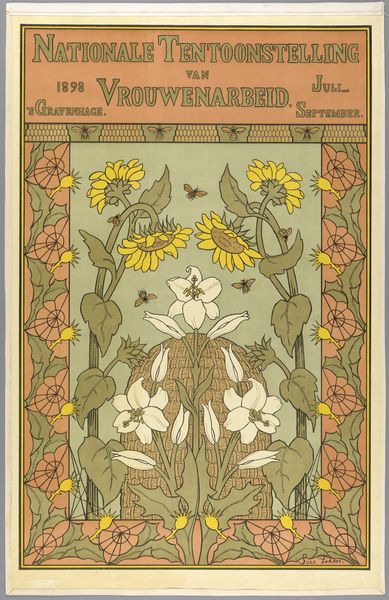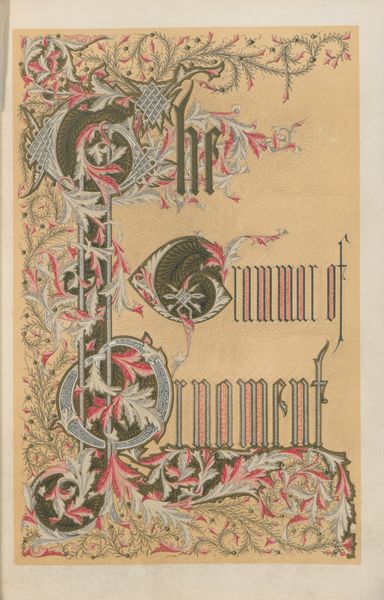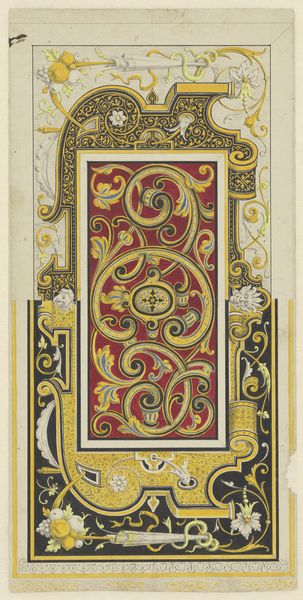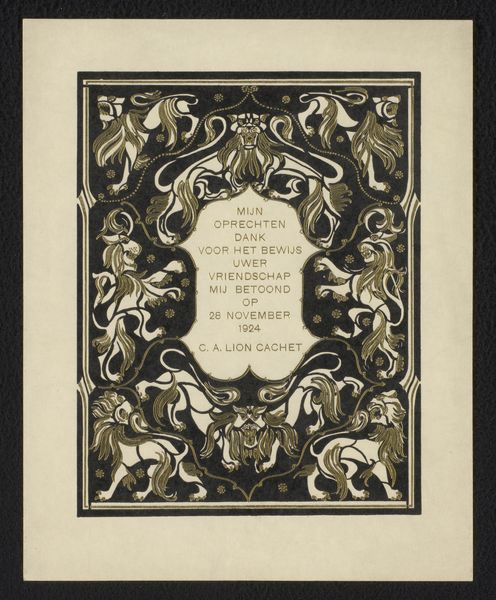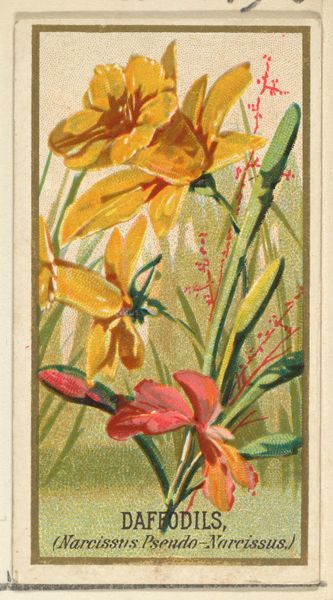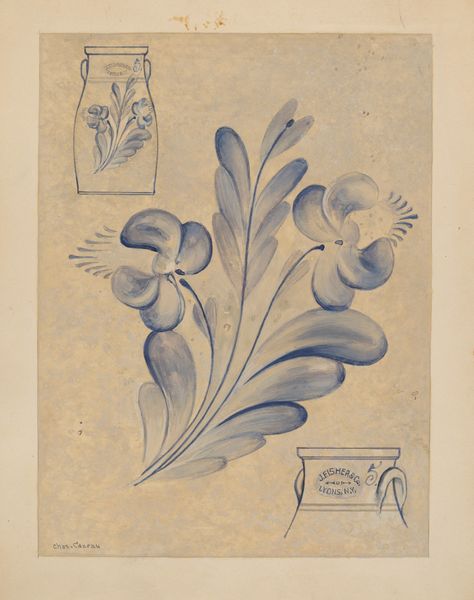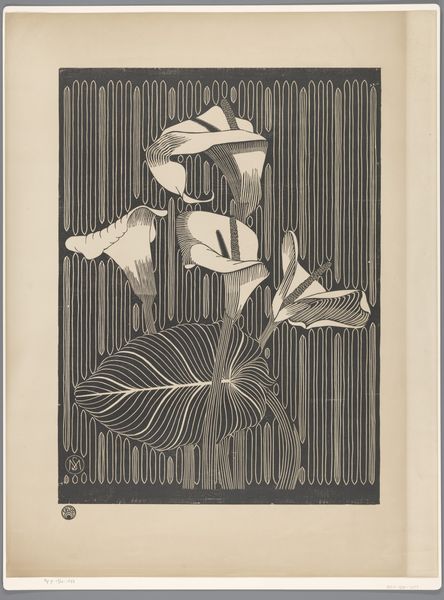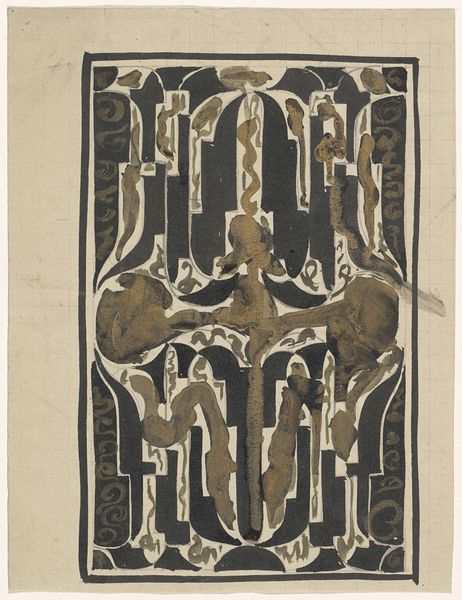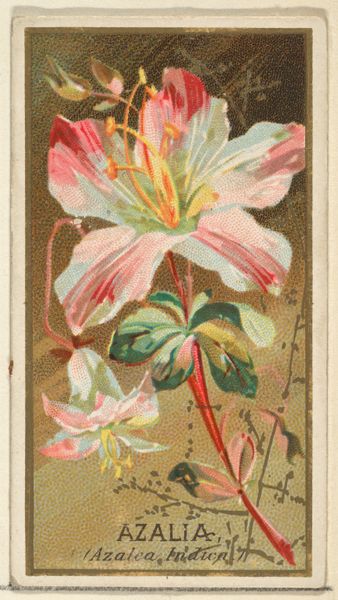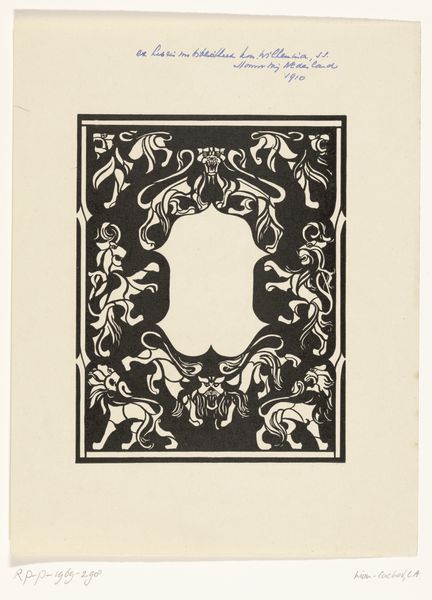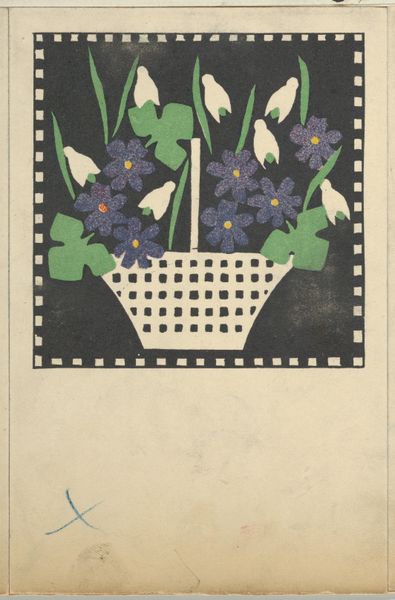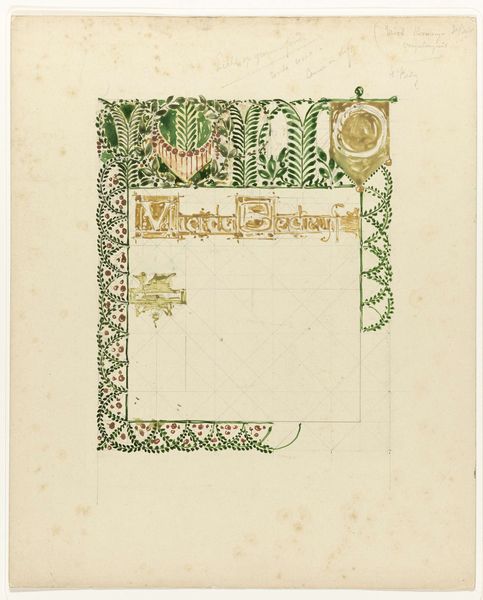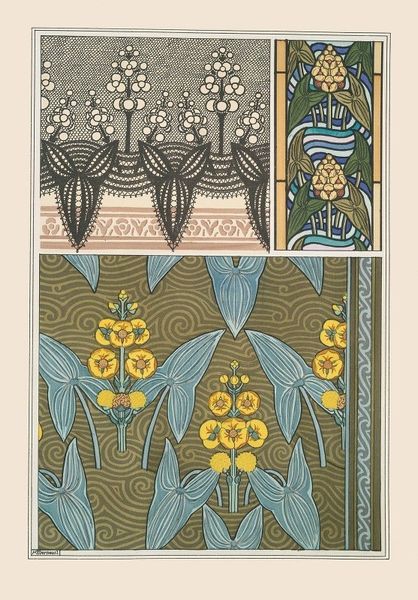
drawing, print, poster
#
drawing
#
art-nouveau
# print
#
landscape
#
flower
#
symbolism
#
poster
Dimensions: height 439 mm, width 212 mm
Copyright: Rijks Museum: Open Domain
Editor: Here we have Theo van Hoytema's "Kalenderblad voor juni 1911 met lissen en een vlinder," made around 1910. It's a print, seemingly intended as a poster. It’s so delicate, yet clearly functional. How do we reconcile this practical purpose with the obvious artistic intent? Curator: I'm interested in that tension you've identified between "art" and everyday use. Van Hoytema worked in a period deeply concerned with blurring those very boundaries, specifically through printmaking. It made art accessible for mass consumption; this calendar, a luxury item perhaps, becomes a widely available product. What does the chosen subject matter – the irises and butterfly – suggest in this context of mass production and availability? Editor: Well, irises can be quite costly flowers. Are you suggesting that through mass production and accessibility of his art, Hoytema democratizes the symbol of the iris and even makes the flower more common or ordinary? Curator: Exactly! He democratizes the means of accessing art and, in that era, also normalizes a status object. Furthermore, the printmaking process itself – the labour involved in creating multiple impressions – contrasts with the delicate aesthetic, highlighting a tension between industrial processes and natural forms. Do you see how the materiality of the poster--cheap paper versus a canvas painting, for instance--shifts its reception? Editor: I hadn't thought of the paper itself, but that makes total sense. It moves it away from being a fine art object to something ephemeral, intended for use and eventual disposal. Something widely owned is necessarily less treasured. Curator: Precisely. We're seeing how materiality, production, and the social context of consumption directly affect meaning. It really shifts the art object from a sacred icon to a widely-distributed and commodified product. Editor: This was such a clever piece by van Hoytema, using both artistic intent, form and content to challenge our perception of everyday life in that time period. Curator: I think reflecting on this calendar gives us insight into the labour of production that is embedded in an artwork and also encourages us to reflect on mass consumerism in everyday lives then and now.
Comments
No comments
Be the first to comment and join the conversation on the ultimate creative platform.
